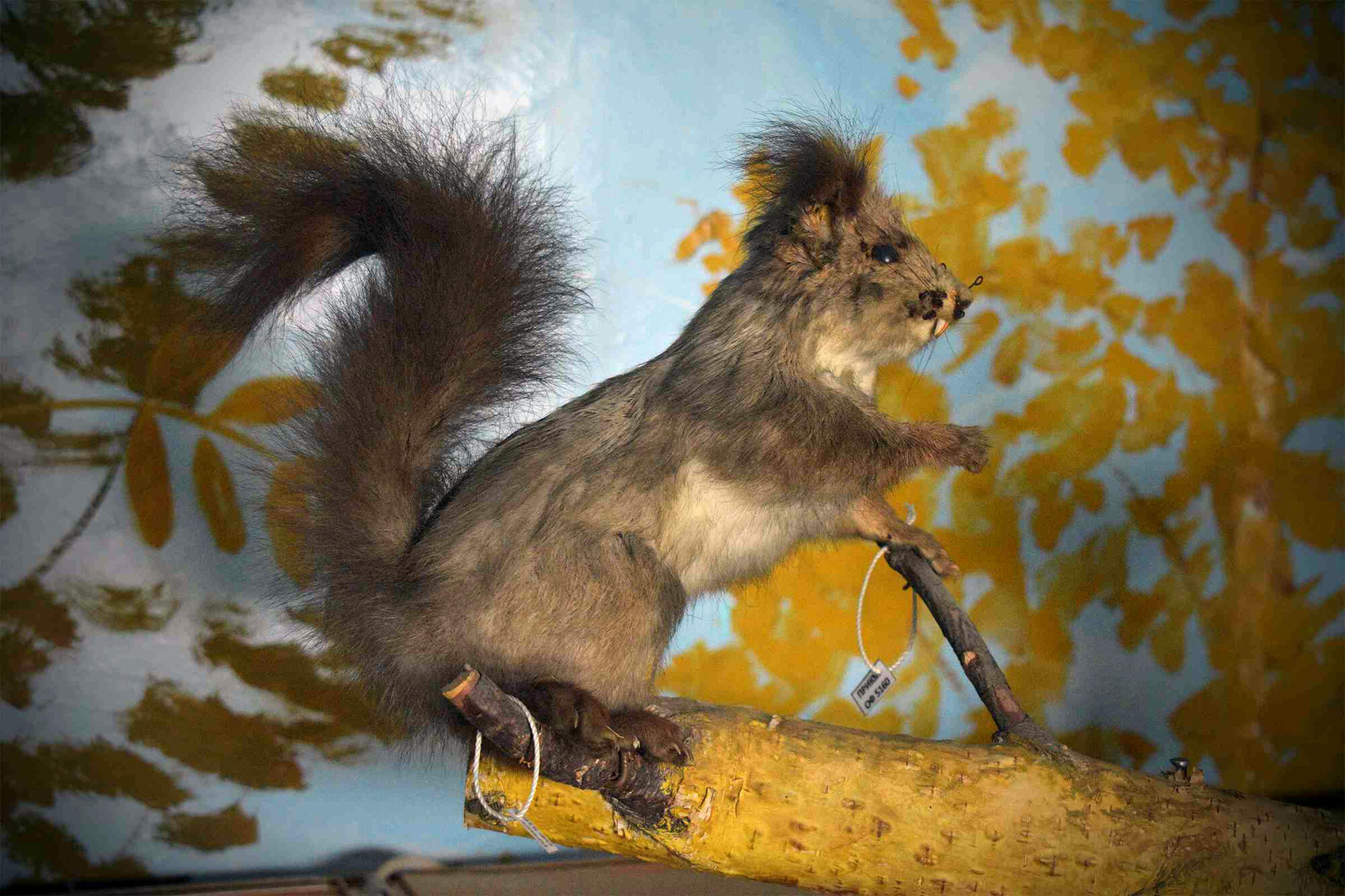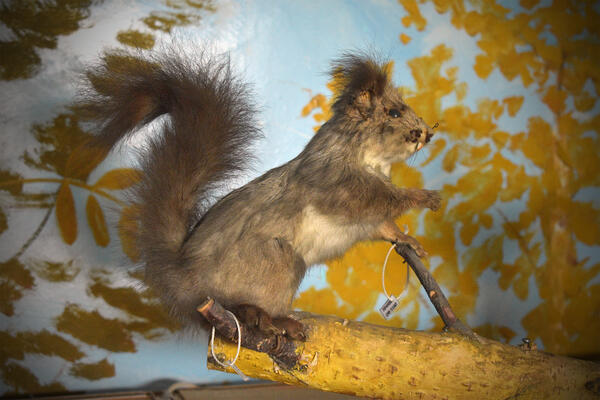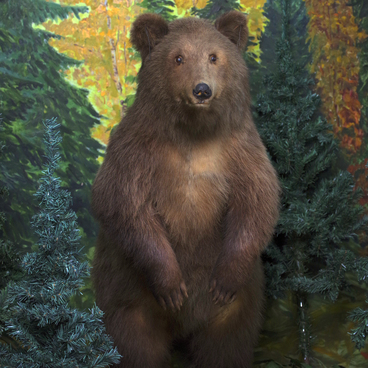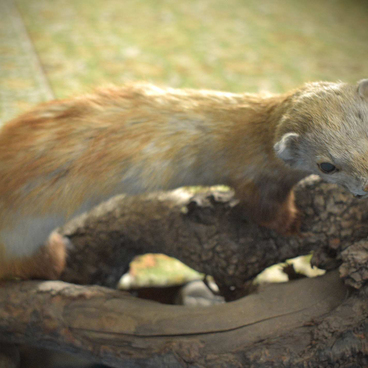This rodent is called the red or Eurasian red squirrel. Worldwide, there are up to 30 species in the squirrel family, which are spread out throughout our planet, but only the red squirrel inhabits our region. It is an agile animal with a slim, well-proportioned body. Its tail is long and fluffy. It can reach 19 centimeters in length and accounts for two thirds of the entire length of this animal’s body. The rodent weighs no more than 400 grams and grows to up to 30 centimeters in length.
The red squirrel has a round head with dark-colored eyes that resemble beads, as well as long ears adorned with tufts, which point upwards.
It lives in trees. These animals search for trees with hollows that they subsequently make into their homes. Red squirrels then stuff them with lichen, grass and leaves. Their nests can be located at a height of 15 meters above ground among dense tree branches. They are spherical in shape and reach a diameter of 30 centimeters.
Before winter starts, Eurasian red squirrels acquire a thicker coat. In summers, their fur is short, sparse and coarse. Just as many others furry creatures, this animal sheds its coat twice a year, while its tail molts only once annually. In spring, the shedding starts with its head and in autumn with the tail.
Red squirrels do not mark their territory, hence several animals can live in the same space. They spend most of their time up in the trees and are especially active in the mornings and evenings. During these hours, Eurasian red squirrels are busy searching for food. If a threat arises, they hide in the crowns of trees. These animals jump from one branch to another with ease. They can cover up to 4 meters when jumping between two spots located at a similar height or up to 15 meters when traveling along a downward arc. Their tails help them navigate. In winter time, red squirrels most often use trees to move around. However, during the breeding season and also in the absence of snow, they can travel on the ground with their long hops.
Whenever it gets extremely cold or during powerful blizzards with lots of snow, Eurasian red squirrels remain in their shelters and leave them only if they are very hungry.
In August through September, young squirrels move away from their homes in large numbers. They leave their nests and travel from 70 to 300 kilometers away. In the wild, only 10% of these animals live to reach the age of 4. In captivity, lifespans of these rodents increase to at least 10 years.
The red squirrel has a round head with dark-colored eyes that resemble beads, as well as long ears adorned with tufts, which point upwards.
It lives in trees. These animals search for trees with hollows that they subsequently make into their homes. Red squirrels then stuff them with lichen, grass and leaves. Their nests can be located at a height of 15 meters above ground among dense tree branches. They are spherical in shape and reach a diameter of 30 centimeters.
Before winter starts, Eurasian red squirrels acquire a thicker coat. In summers, their fur is short, sparse and coarse. Just as many others furry creatures, this animal sheds its coat twice a year, while its tail molts only once annually. In spring, the shedding starts with its head and in autumn with the tail.
Red squirrels do not mark their territory, hence several animals can live in the same space. They spend most of their time up in the trees and are especially active in the mornings and evenings. During these hours, Eurasian red squirrels are busy searching for food. If a threat arises, they hide in the crowns of trees. These animals jump from one branch to another with ease. They can cover up to 4 meters when jumping between two spots located at a similar height or up to 15 meters when traveling along a downward arc. Their tails help them navigate. In winter time, red squirrels most often use trees to move around. However, during the breeding season and also in the absence of snow, they can travel on the ground with their long hops.
Whenever it gets extremely cold or during powerful blizzards with lots of snow, Eurasian red squirrels remain in their shelters and leave them only if they are very hungry.
In August through September, young squirrels move away from their homes in large numbers. They leave their nests and travel from 70 to 300 kilometers away. In the wild, only 10% of these animals live to reach the age of 4. In captivity, lifespans of these rodents increase to at least 10 years.



